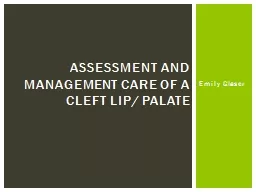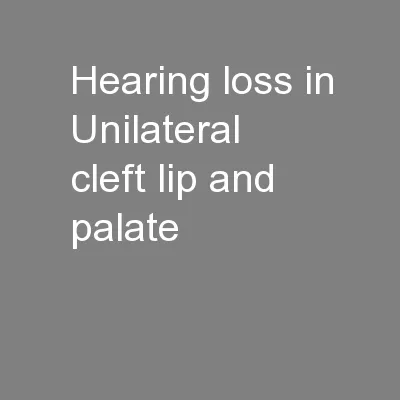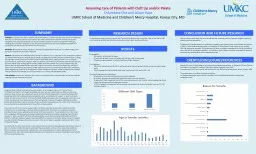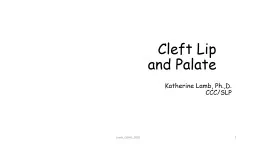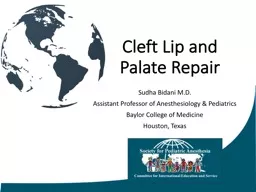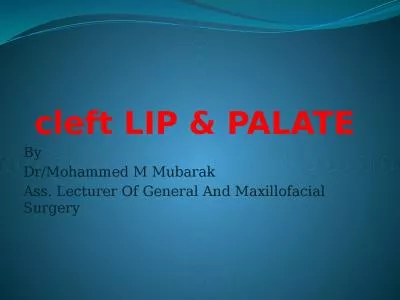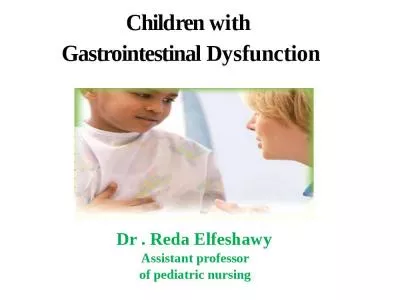PPT-Hearing loss in Unilateral cleft lip and palate Jadranka Handzic
Author : pasty-toler | Published Date : 2019-11-01
Hearing loss in Unilateral cleft lip and palate Jadranka Handzic MD PhD Professor of Otolaryngology Audiology and Vestibulology Department for Otolaryngology and
Presentation Embed Code
Download Presentation
Download Presentation The PPT/PDF document "Hearing loss in Unilateral cleft lip and..." is the property of its rightful owner. Permission is granted to download and print the materials on this website for personal, non-commercial use only, and to display it on your personal computer provided you do not modify the materials and that you retain all copyright notices contained in the materials. By downloading content from our website, you accept the terms of this agreement.
Hearing loss in Unilateral cleft lip and palate Jadranka Handzic: Transcript
Download Rules Of Document
"Hearing loss in Unilateral cleft lip and palate Jadranka Handzic"The content belongs to its owner. You may download and print it for personal use, without modification, and keep all copyright notices. By downloading, you agree to these terms.
Related Documents



